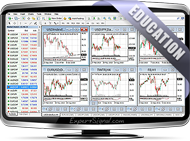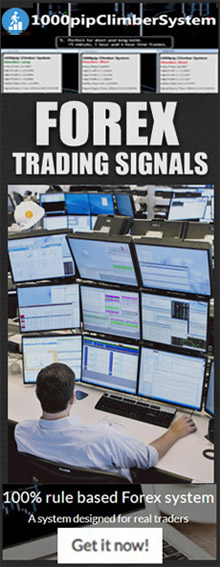RISK MANAGEMENT -BASIC CONCEPTS AND RULES

Risk management is perhaps the most important component of long-term trading success. This tutorial covers some basic concepts and rules of effective risk management.
Diversification and the 25-2% Rule
Diversification is the holy grail of financial investing. The benefits of diversifying positions in investing are far greater than the average trader might imagine.
What does Diversification mean?
Diversification simply means not putting all your eggs in one basket. In other words, it involves becoming more varied by including a wide range of investments in the same portfolio.
The 25-2% Rule
The first percentage (25%) refers to the asset class, and the second (2%) to the individual asset, therefore:
(i) Don’t invest more than 25% of your portfolio in the same asset class (e.g. stocks, precious metals, Forex currencies, bonds, etc.)
(ii) Don’t invest more than 2% of your portfolio in a single trade position (e.g. a specific stock, a Forex pair, etc.)
Professional traders may employ strategies that risk no more than 0.5% per trade.
Controlling Capital Leverage
Capital leverage increases profit potential but also leads to higher trading costs:
(i) Increases Profit Potential
(ii) Increases Loss Potential
(iii) Paying more Trading Cost
If (i) and (ii) are considered equal, then the trader consistently faces higher trading costs. If you trade by applying 100:1 leverage, there is a 95% probability that you will lose the entire account within 2–3 months. Professional traders avoid using leverage greater than 5:1.
Controlling Risk by Entering Stops
Many retail traders avoid using stop orders, fearing that institutional traders and brokers might engage in stop-hunting. While this concern is partially valid, the solution is not to avoid stops but to set proper mental stops.
Using the Right Stops
(i) To avoid stop-hunts, do not place stops where everyone else does (e.g., exactly above/below a major support/resistance level)
(ii) Empirical research shows you should place stops at least 55 pips above/below major support/resistance levels
(iii) When setting stops, focus on the H4 chart; shorter timeframes are affected by the disruptive effect of ‘market noise’
(iv) Ensure you are analyzing the market using the appropriate chart (for example, technical analysis might be ineffective for Forex Cross pairs in identifying stops)
(v) Identify the primary price channel and place your stops 55–70 pips above/below it (Forex pairs usually move within well-defined price channels)
Positioning Using Stops with Pilot Orders
Many traders set poor stops simply because their account cannot support wider ones. This can be resolved by using a pilot order.
Example: Suppose you identify a potentially profitable trade and intend to risk $500 on it. Follow this process:
(i) Determine a Take-Profit and Stop-Loss level
(ii) Calculate the Reward/Risk Ratio (avoid trading unless it's at least 2:1)
(iii) Open a pilot position (0.01 lot) and measure the potential loss in dollars
(iv) If your potential loss is $50, your total position should not exceed 0.1 lots. Therefore, open an additional 0.09 lot order.
Just like that, you gain full control over the risk and spread costs for each position.
Three Types of Stop-Loss Orders
A stop-loss is an order that closes a position once the asset price reaches a certain level. Here are the most common stop-loss types:
- Fixed Stop-Loss
- Dynamic Trailing Stop-Loss
- Fixed Trailing Stop-Loss
(i) Fixed Stop-Loss
You manually set a price level at which your position will automatically close. This level can be modified at any time.
(ii) Dynamic Trailing Stop-Loss
This type automatically adjusts the stop-loss level as the asset price moves in your favor. For example, with a -10 pip dynamic stop, a 10-pip favorable move would bring the stop to break-even (0 pips). As the market moves further in your favor, the stop adjusts pip-by-pip.
(iii) Fixed Trailing Stop-Loss
Similar to the dynamic trailing stop, but it trails in fixed increments (e.g., every 10 or 50 pips), instead of pip-by-pip like the dynamic version.
To avoid stop-hunts, don’t place the same stops as the majority (e.g., exactly above/below key levels).

Drawdown (%) and the Risk of Losing Streaks
Drawdown is a critical aspect of risk management. It represents the percentage reduction in your portfolio following a sequence of losing trades. It is calculated as the percentage difference between a relative peak and a relative trough. If an investment never incurs a loss, the maximum drawdown would be zero. In reality, even top-performing systems will eventually experience losing streaks. Risk management helps protect a portfolio during such times.
What is Maximum Drawdown?
Maximum drawdown is the peak-to-trough percentage decline of a portfolio over a specific period.
■ Max Drawdown = (Peak Value – Lowest Value) / Peak Value
It is wise to track drawdown and set a personal maximum drawdown limit.
■ 10–15% maximum personal drawdown (always consider the timeframe in question)
Conclusions on Risk Management
Here’s a summary of the key concepts and rules of risk management:
-
Risk management is perhaps the most important factor in achieving long-term trading success.
-
Diversification involves combining a broad range of investments within the same portfolio.
-
The 25-2% Rule advises not to invest more than 25% in a single asset class and no more than 2% in any individual position.
-
Avoid excessive leverage—it increases both trading risk and costs.
-
To avoid stop-hunts, avoid placing stops where most traders do.
-
Place stops at least 55 pips beyond major support/resistance levels.
-
Use H4 or higher charts; lower timeframes suffer from market noise.
-
Use pilot orders to manage lot sizes if you're unsure.
-
Trailing stops are effective tools for securing and expanding profits in winning trades.
-
Drawdown is inevitable—even the best strategies face losing streaks—so always manage it wisely.
□ Basic Concepts and Rules of Risk Management
George Protonotarios, financial analyst
for ExpertSignal.com (c)








